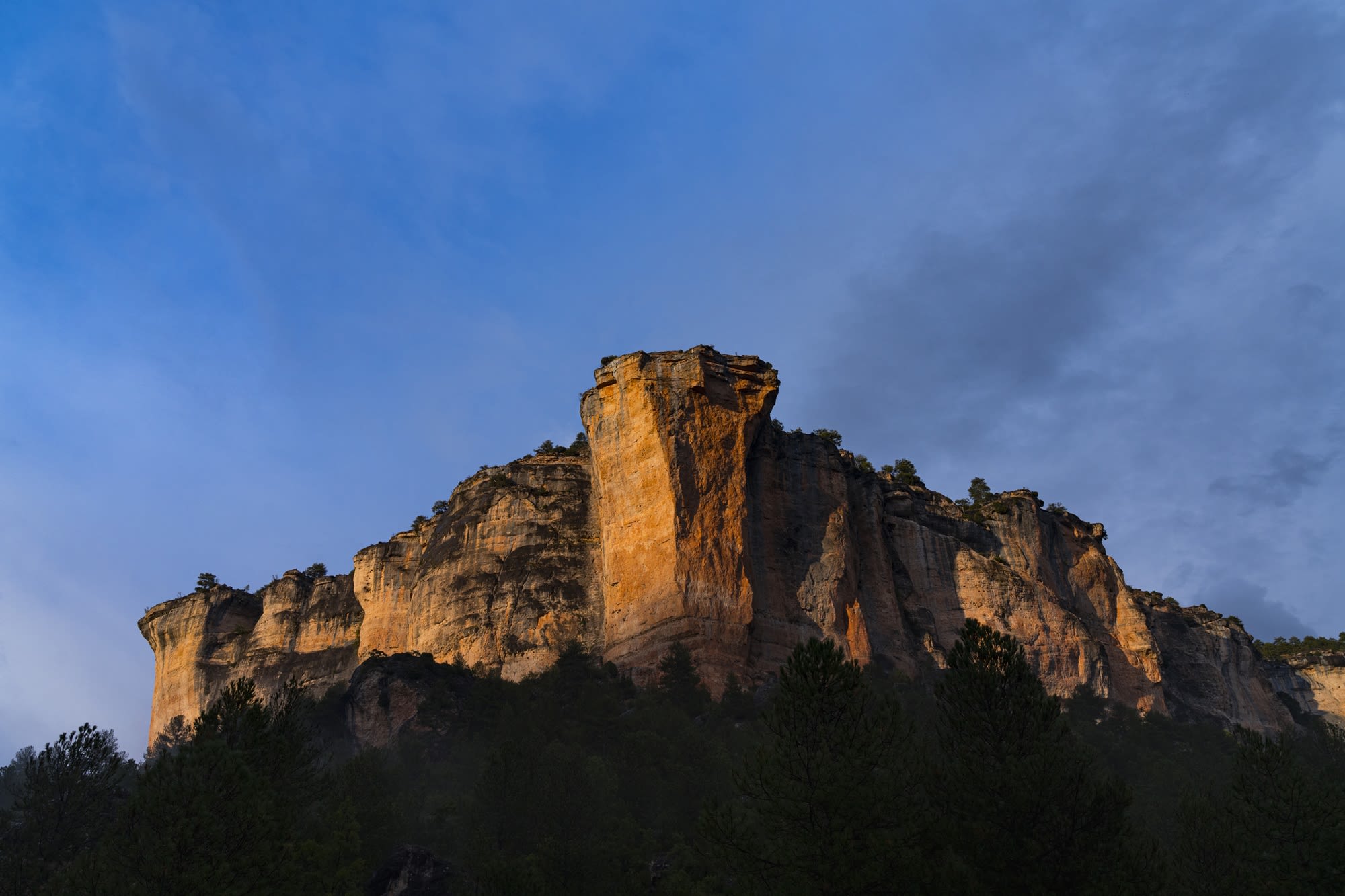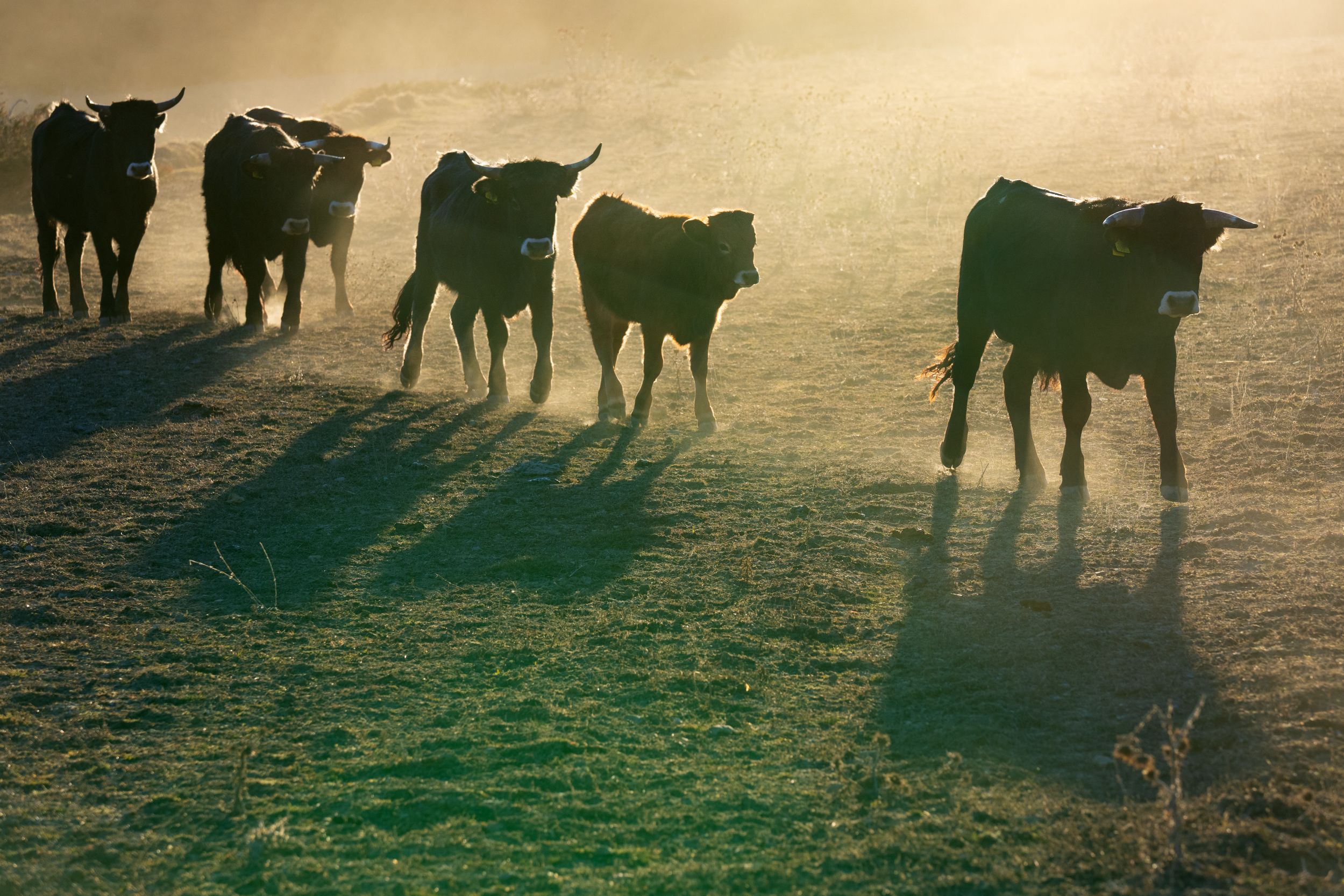Wild horses
Meet the team reintroducing large herbivores to the coldest place in Spain

In this series, we visit the projects made possible by the Endangered Landscapes & Seascapes Programme. These restoration landscapes are bringing back nature on a massive scale.
Iberian Highlands
Welcome to the coldest place in Spain. Landlocked between Madrid, Valencia and Zaragoza, it is beset by heavy winds. Temperatures can fall to -20C at night.
Still, life can thrive. Here is one of the only Juniper forests left in Europe, and a bewildering network of canyons where the river Tagus has its source. In distant days, large herbivores roamed these lands, creating a mosaic of grass and forest wherever they trod. With the help of Rewilding Spain and the Iberian Highlands project, those days are no longer distant.
That’s thanks in large part to team leader Pablo Schapira. Pablo wants to reintroduce large herbivores and reinvigorate the landscape.
Przewalski's horse foal in Villanueva de Alcorón, by Lidia Valverde
Przewalski's horse foal in Villanueva de Alcorón, by Lidia Valverde
For twelve years, Pablo lived in Africa: in the Democratic Republic of the Congo, Ethiopia, Benin, and Mozambique. Working as a biologist, he monitored wild animals and saw how they shaped the landscape. Now, he’s returned home to Spain, bringing this knowledge with him.
“Watching the animals we’ve reintroduced in Spain, it reminds me of Africa,” Pablo says. “It’s the only other place I’ve seen wild animals like it. To see it happening in Europe is extraordinary.”
“These animals are the architects of the landscape.”
Pablo Schapira, team leader of the Iberian Highlands project

Animals return
Restoration of any kind is complex. It demands a mix of experimentation and careful planning.
“When we talk of rewilding, the most important part is recovering the ecological processes. You need to fill the empty roles that previous species were fulfilling. Ideally, you reintroduce a species that was part of the landscape before. We can do this with species like the Cinereous vulture. But when the previous species is extinct, you have to get creative.”
The Iberian Highlands used to boast aurochs, bison and wild horses. Most of these animals have now vanished.
In pursuit of the auroch, the Tauros Programme is breeding cattle from around the world, selecting for similar genetics to try and bring something like the extinct creature back to life. The first British herd of tauros will soon be released into the Scottish Highlands.
For wild horses, they’re trying something different.
“To replace wild horses’ role in the landscape, we’re using a few existing breeds: Pottoka, Serrano and Przewalski’s horses.”
Stocky and short-legged, Przewalski’s horses have an ancient aura. They look like the horses you see in humanity’s earliest cave paintings. And like our ancestors, Pablo now sits to watch them, as they form herds and frolic.
Cave painting of horses in Lascaux
Cave painting of horses in Lascaux
Przewalski horses in Villanueva de Alcorón, Guadalajara, by Juan Carlos Munoz Robredo
Przewalski horses in Villanueva de Alcorón, Guadalajara, by Juan Carlos Munoz Robredo
“As well as fulfilling the ecological and economical roles that the Iberian landscape needs, these species are themselves endangered. In the case of the Przewalski’s, there are only 3,000 left in the world. So by bringing them to our huge open spaces, we can improve their population.
“They’ve adapted well - they’re already breeding. We have a big herd of 26 horses roaming together.
“It’s amazing to see the huge ecological benefits that big herbivores have on the environment. These animals are the architects of the landscape.”
Without herbivores, the landscape tends towards closed forest. This solid accumulation of biomass increases the risk of big fires. Fires stop naturally when you have open spaces to break up the forest. By grazing, herbivores turn the land into a mosaic of forests and grasslands. So now, raging fires hit these natural buffers and peter out before too much damage is done.
“Herbivores also enrich the soil with their dung and trampling. These soils form the base for other animals. So the herbivores have a cascading, positive effect on the landscape.”
Cinereous vulture, by Juan Carlos Muñoz
Cinereous vulture, by Juan Carlos Muñoz
Bringing people back
In terms of human population, the highlands are currently as sparse as Siberia: in some areas, there are less than two people per square kilometre. Since the 1950s, locals started moving to bigger cities in search of a different kind of life. Young people were not enamoured by the demands of keeping livestock, and the uncertainty of a life dependent on the land.
The Iberian Highlands project promotes a different kind of economy, one working in tandem with a thriving ecosystem. In this way, Pablo hopes to lure people back.
“With ecotourism and ecosystem services, we can transform the lives of people here. Rewilding can have a huge impact on the economy.”
A short introductory film on the initiative, made prior to the launch
Rewilding Spain is already creating jobs and shaping the future of the region. It helps entrepreneurs to build businesses around the animals they’re bringing to the highlands.
“Throughout all this, we’re so lucky to have the support of the Programme. They helped kickstart our initiative, and enable us to collaborate with other projects. We learn so much from their other partners across Europe.
“We’ve grown from six employees to eighteen. We want to keep going for at least the next twenty years, expanding our work to focus more on carbon sequestration and further ecosystem services.”
By echoing our ancestors, people like Pablo are bringing Europe’s landscapes back to life. The Programme injects expertise and urgency into these efforts. In this dramatic landscape, herbivores can once more play their natural roles: firefighters, soil enrichers, free-roamers.
There isn't much time to act, but we need to get restoration right. For an overview of how the Endangered Landscapes & Seascapes Programme is putting cutting-edge science to use, read our interview with Nancy Ockendon, the Programme's Science Manager.
Elsewhere, a UK project is providing a safe haven for vital fish and bird species. Dive into the Solent Seascape to see how volunteers are braving the early chill to plant new seagrass meadows.
The Endangered Landscapes & Seascapes Programme provides grants to projects which restore threatened environments across Europe. Projects made possible by the Programme have preserved over 250,000 hectares of land and sea, and helped to protect over 100 threatened species.
The Programme is managed by the Cambridge Conservation Initiative, a partnership between the University of Cambridge and ten of the world’s leading international biodiversity conservation organisations.
Published October 2024
The text in this work is licensed under a Creative Commons Attribution-NonCommercial-ShareAlike 4.0 International License




